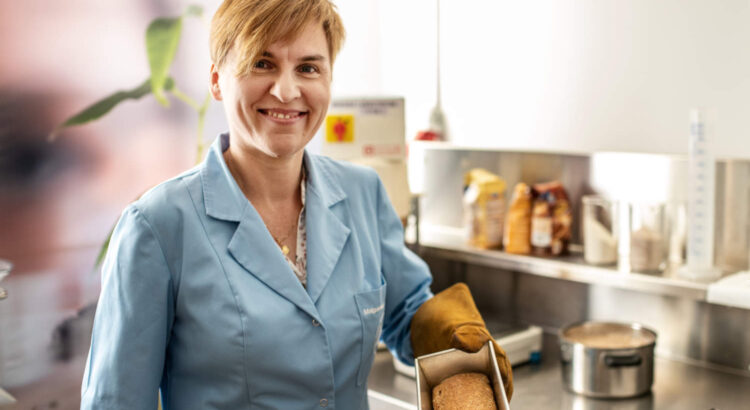Buckwheat husk is a waste product that housewives used to fill pillows and mattresses with. Today, it is also known to be a valuable source of dietary fibre and compounds with antioxidant properties. Dr. Małgorzata Wronkowska from the Institute of Animal Reproduction and Food Research of the Polish Academy of Sciences in Olsztyn convinces that it is worth adding it to bread.
– The novelty of our research is the use of ground buckwheat hulls in a retail bakery product. The bread we have proposed using buckwheat hulls is richer than the traditional bread with an increased proportion of dietary fibre and compounds with proven antioxidant properties – emphasises one of the authors of the study, Dr. Małgorzata Wronkowska, from the Department of Chemistry and Biodynamics of Food at the Institute of Animal Reproduction and Food Research of the Polish Academy of Sciences in Olsztyn.
The results of the study were described in a paper published in the journal „European Food Research and Technology” .
VALUABLE WASTE
Buckwheat is included in the group of so-called pseudo-cereals, which produce seeds similar to cereal grains. The seeds are then used to produce one of Poland’s most popular groats, as well as buckwheat flour. They are rich in nutrients including dietary fibre, high-quality protein, vitamins, minerals or compounds with antioxidant properties. In addition, they are gluten-free products.
During the production of buckwheat groats, the husk is separated from the seeds. For decades, this waste was used to fill mattresses and pillows, and is now also used as a substrate for biofuel production, among other things.
As Małgorzata Wronkowska points out, the husk is, indeed, a waste product, but an extremely valuable one.
– The husk of every seed is a reservoir of many valuable ingredients. By getting rid of it, we remove not only dietary fibre, but also many micro- and macroelements and vitamins. Therefore, it is recommended to eat processed cereals as little as possible – the scientist points out.
BREAD WITH HUSK
Scientists from Olsztyn decided to study whether and how buckwheat hulls could be used in food products and, in particular, in bread.
They developed a recipe for enriching the composition of traditional Balton bread and graham rolls with ground buckwheat hulls. These products were available for retail sale in Warmia and Masuria.
In vitro studies, which simulated the conditions of digestion occurring in the human body, confirmed that 3% buckwheat hull in bread can have a beneficial effect on the human body. – In the proposed digestion model, we showed that the components that are released from a solid food matrix, which in this case was a popular and generally available bakery product, are compounds that exhibit antioxidant activity. And thus they can be, after digestion, better absorbed by the body – the scientist points out.
In studies on the sensory evaluation of baked products containing buckwheat hulls, consumers and experts have pointed to a perceptible 'sandy’ quality in the texture of the bread. As the co-author of the study explains, this is due to the degree of hardness of the buckwheat hull, which can only be ground in suitable equipment; this is unlikely to be possible at home. – Recently, however, a ground buckwheat husk product has become available in the retail market, which consumers can use themselves, for example, as an addition to home-made bread – the researcher adds.
In future, the Olsztyn researchers would also like to find out whether and how buckwheat hulls can be used to produce other bakery products such as cakes or savoury snacks. – Since we already know that buckwheat hull is a very valuable raw material, why not use it to obtain other products as well – concludes Małgorzata Wronkowska.
—
The recipe for the baked product described in the aforementioned publication was presented to bakeries cooperating with the Institute of Animal Reproduction and Food Research of the Polish Academy of Sciences in Olsztyn during a project led by Professor Henryk Zieliński of the Department of Chemistry and Biodynamics of Food. In this project, scientists proposed enriching bakery products (bread and rolls) available for retail sale in the Warmia and Mazury region with various ingredients (such as buckwheat hulls or onions) that contain biologically active compounds with positive (tested and documented) effects on human health.
